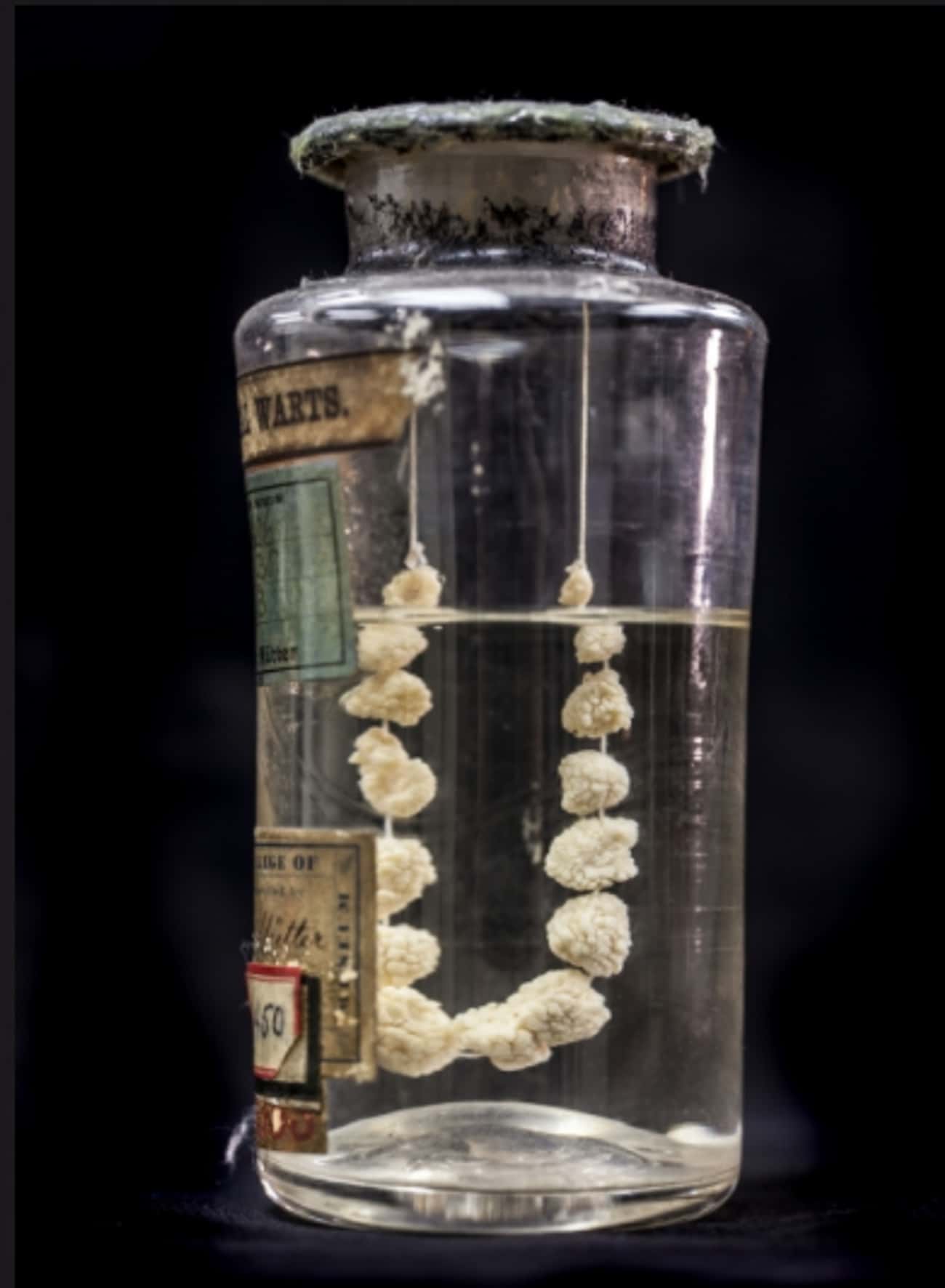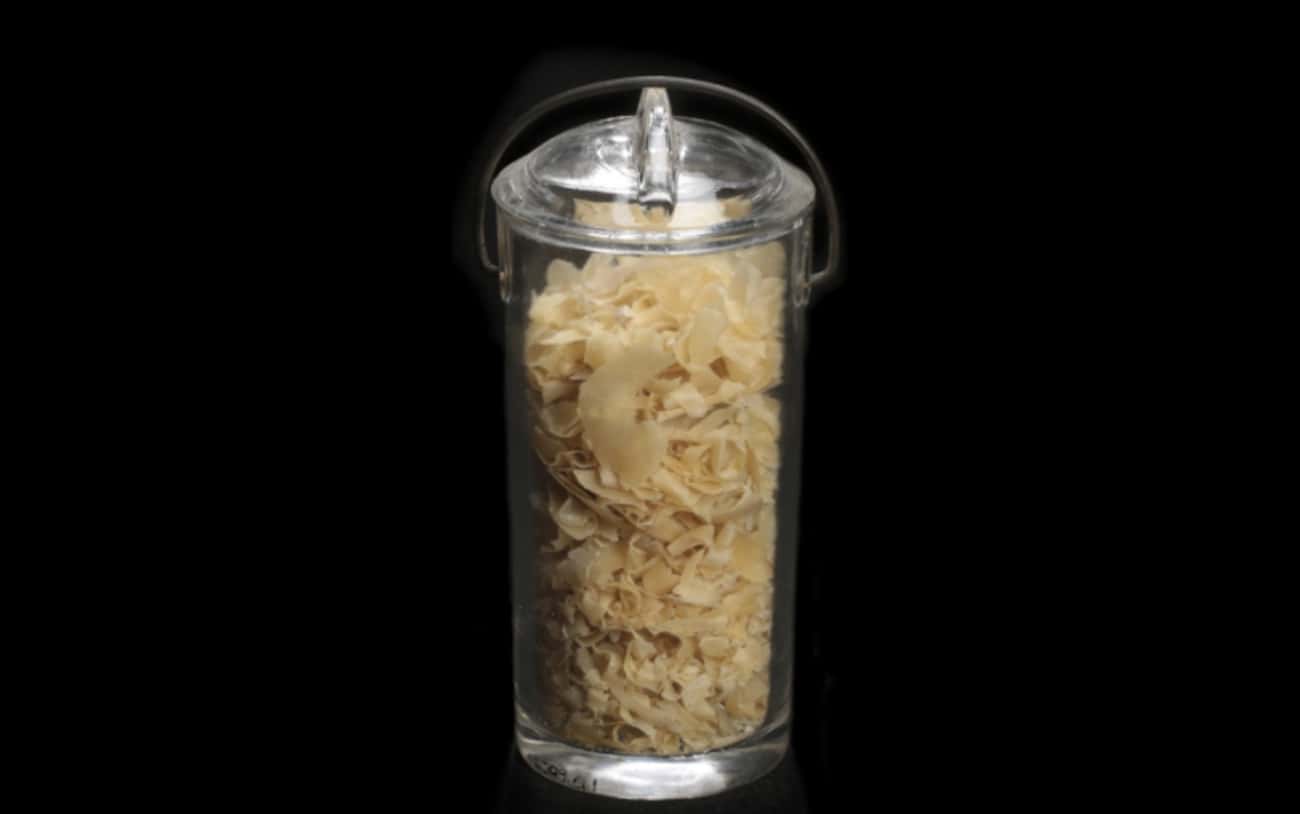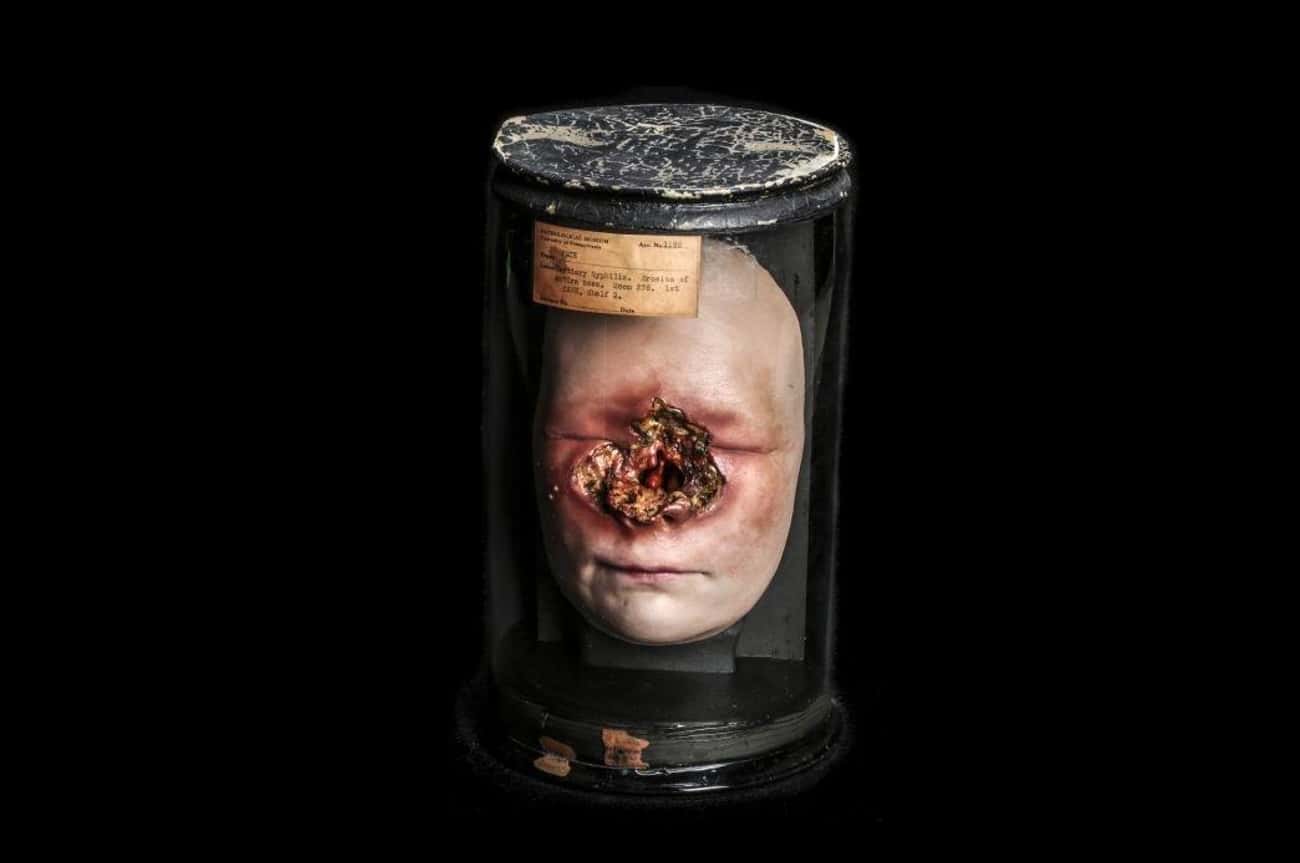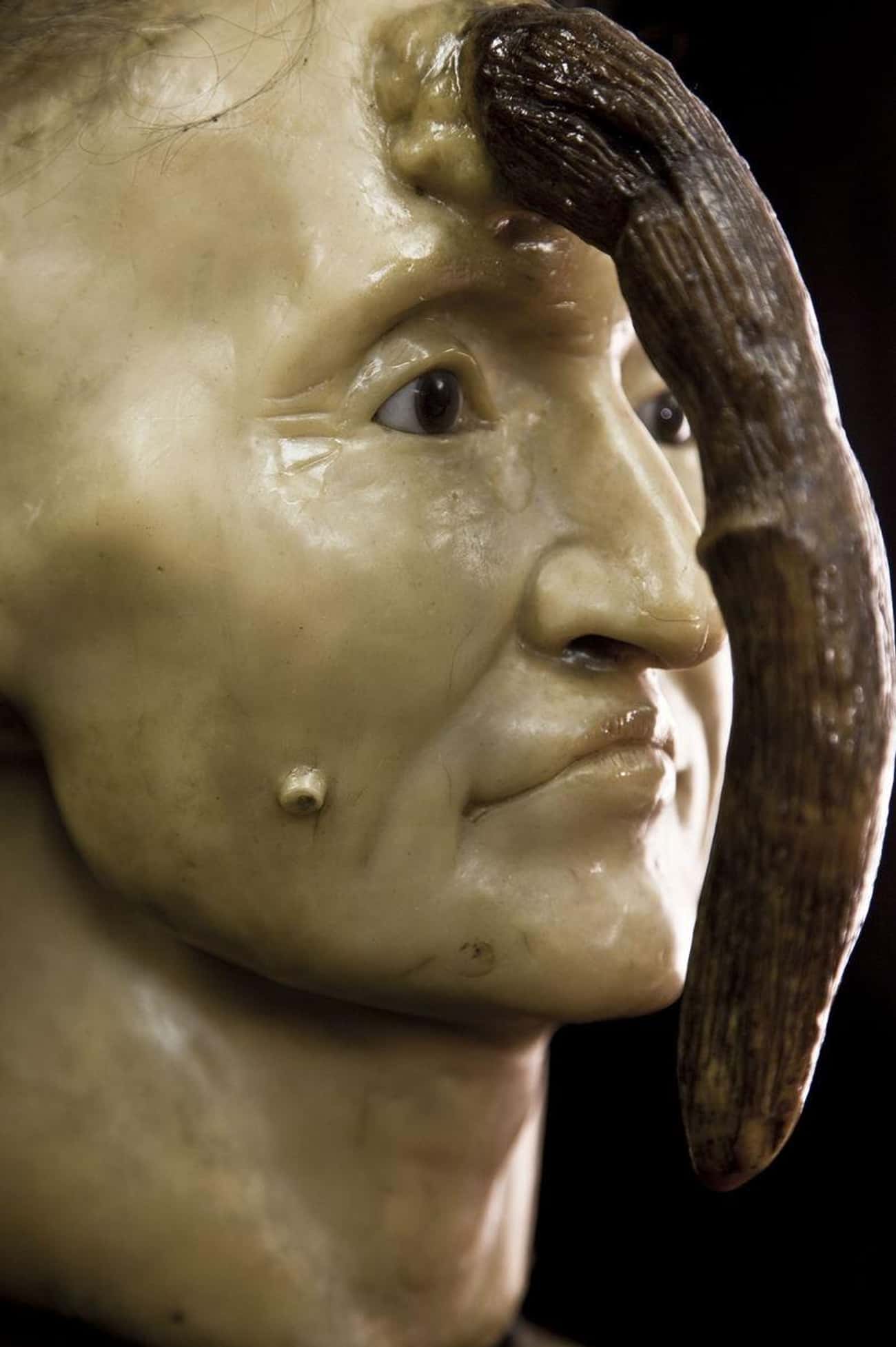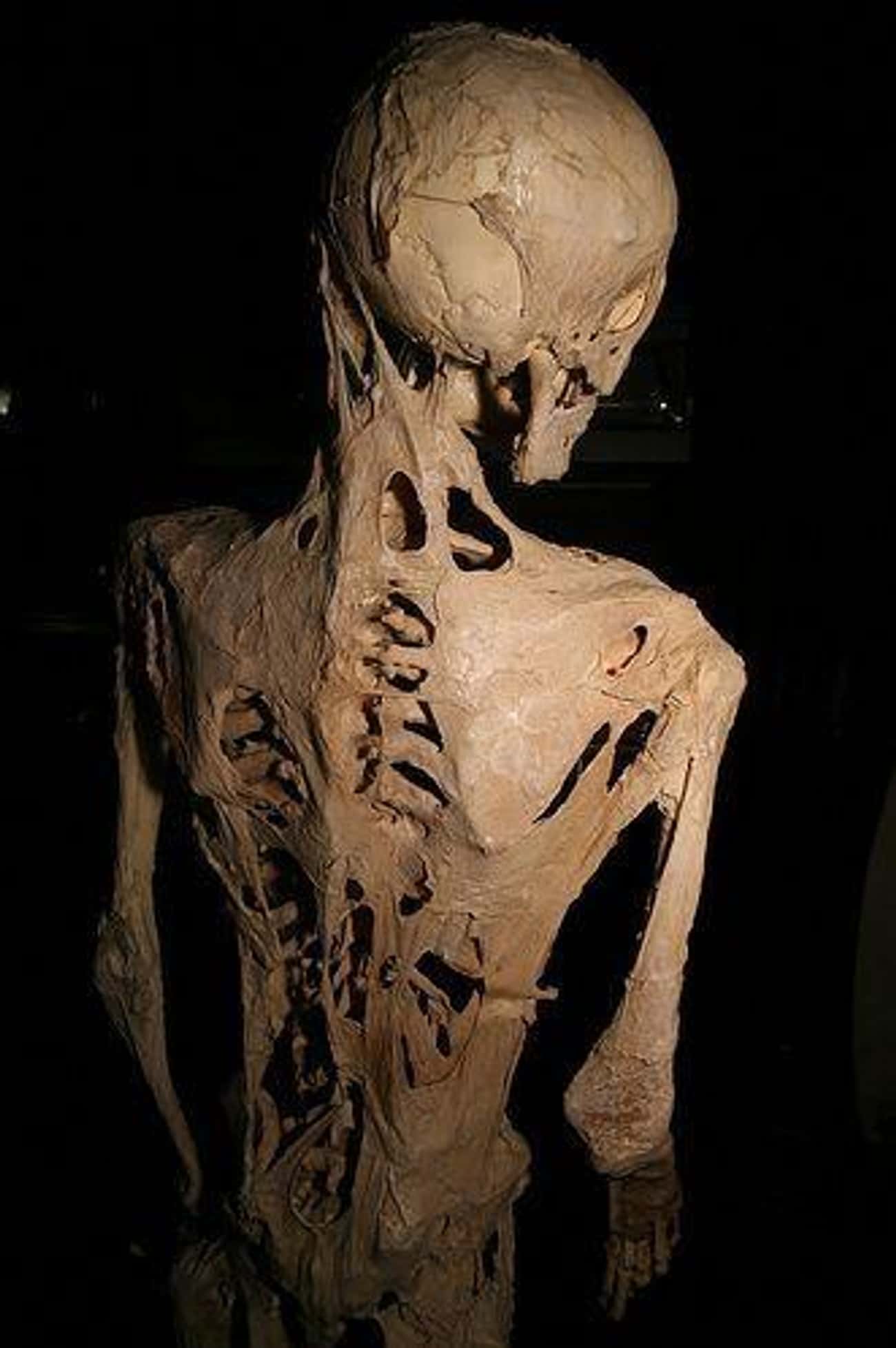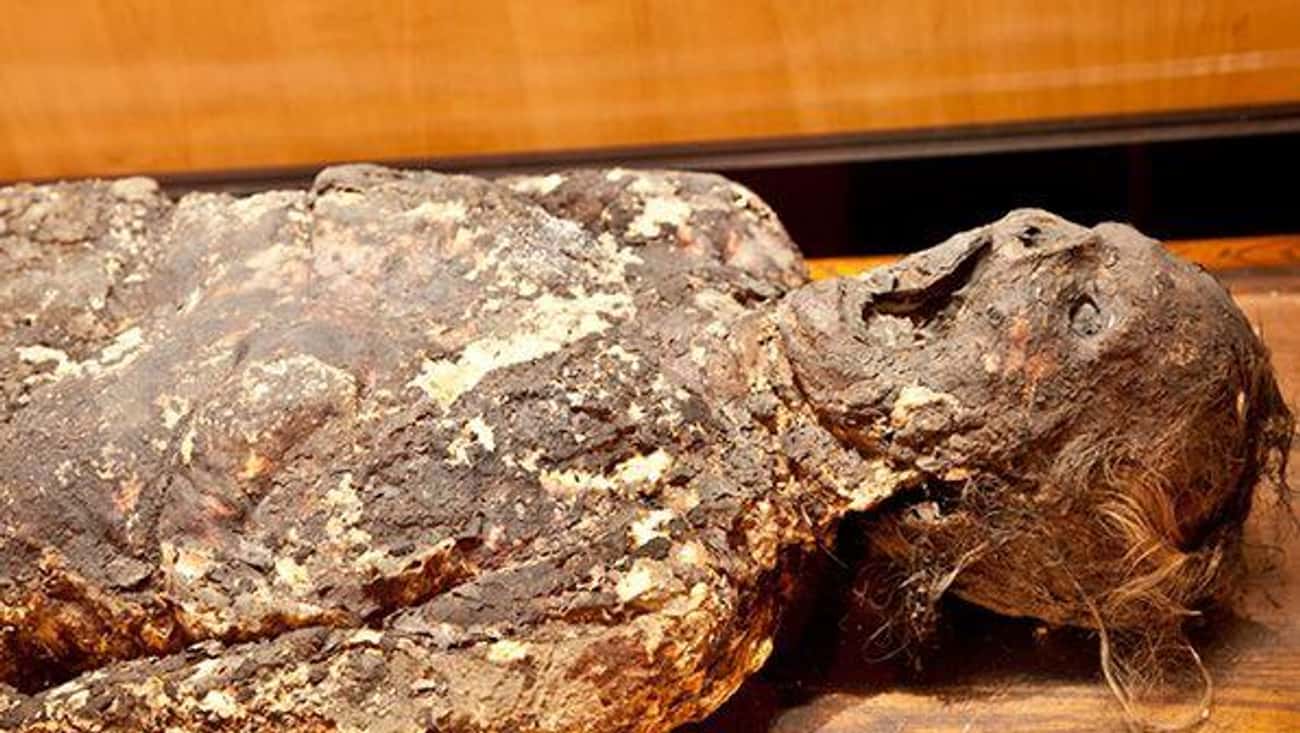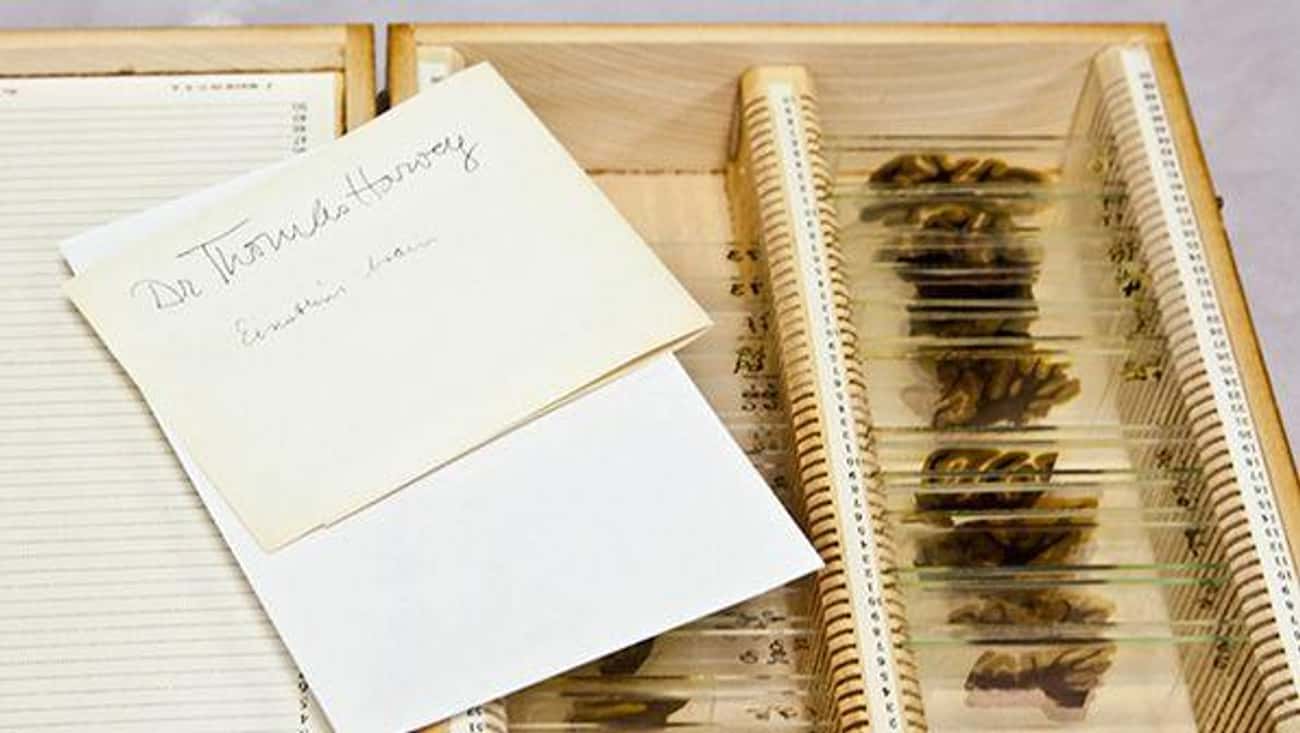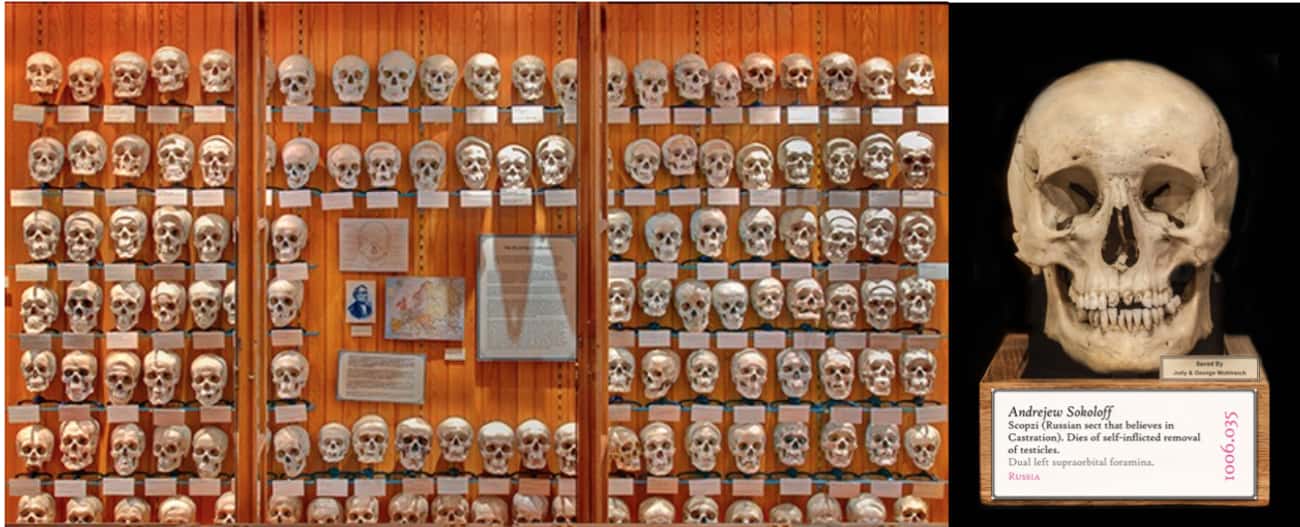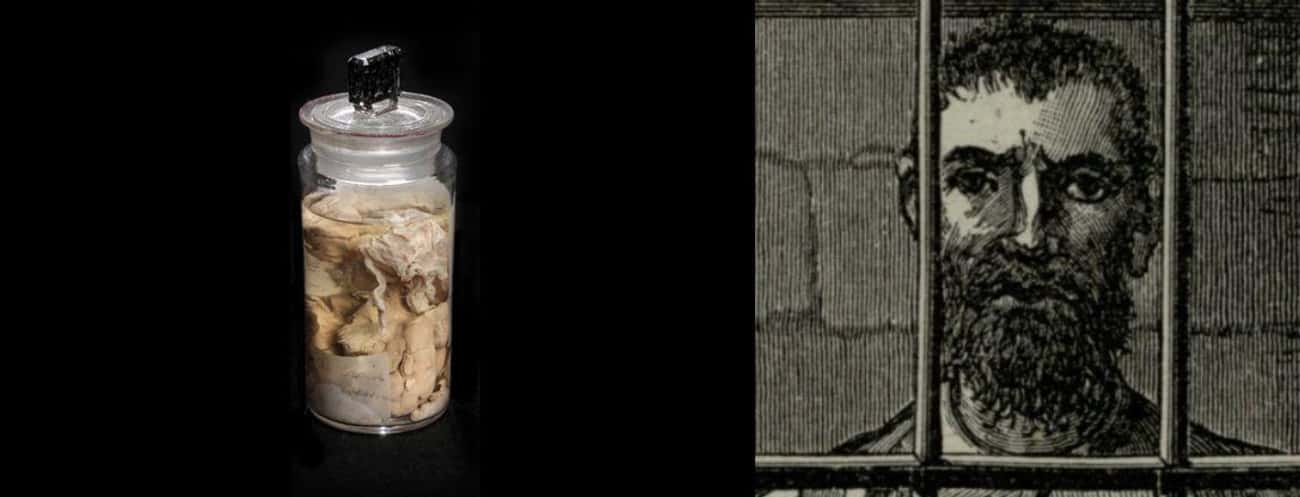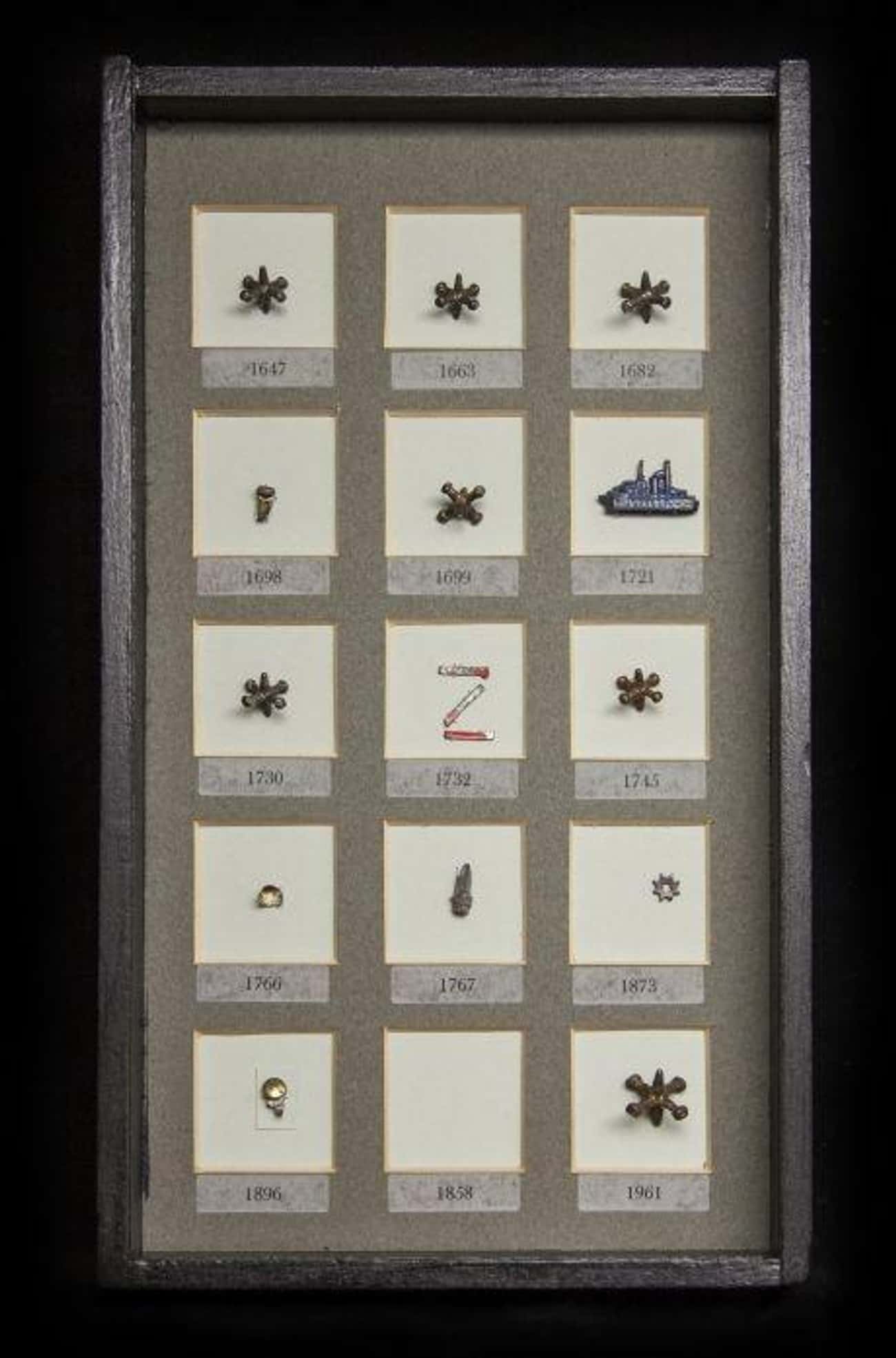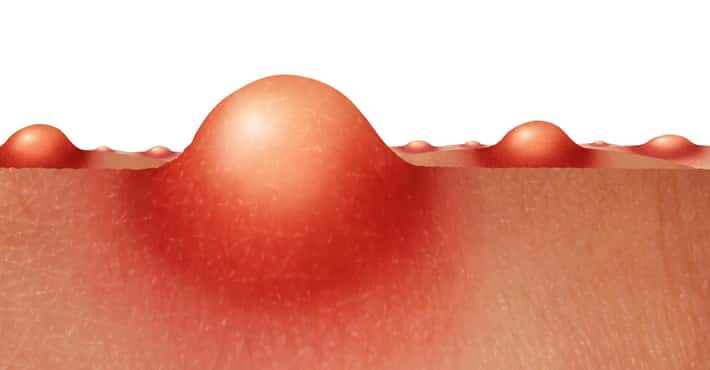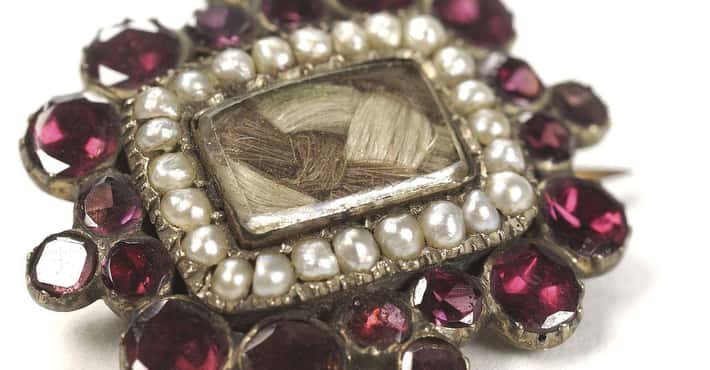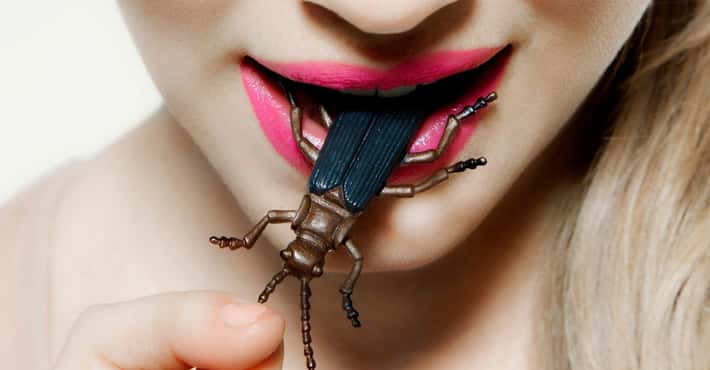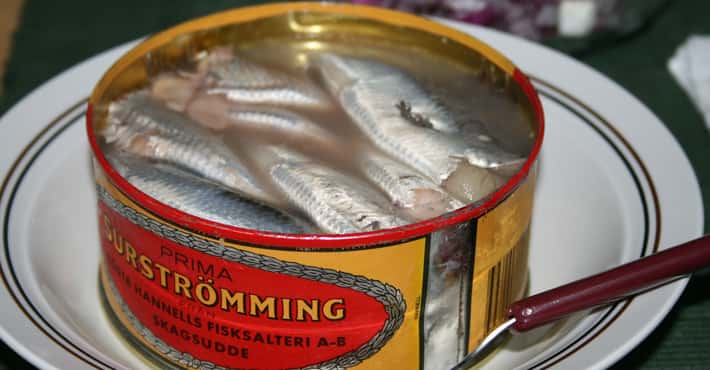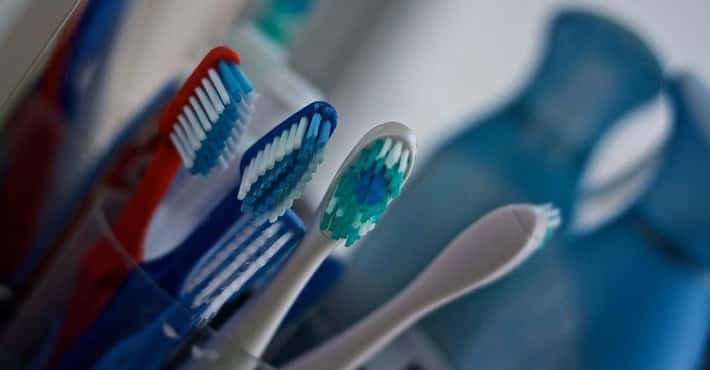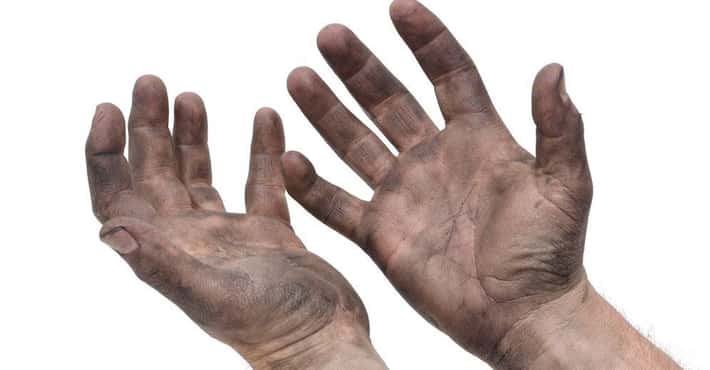13 Super Weird And Disgusting Things On Display At The Mütter Museum
- 13,254 VOTES
Genital Warts Necklace
Photo: Mutter Museum / Creative CommonsIn 1813, a physician named HF Nordeman said, “Nothing is more satisfactory than the treatment of venereal warts." The genital warts on display at the Mutter Museum are helpfully strung like a necklace to make studying them easier.
In the 21st century, lasers and liquid nitrogen are used to remove and freeze genital warts; doctors numb the area with a local anesthetic before hand. Warts in the early 19th century were burned off with nitric acid. The local anesthetic used? A shot in the groin with an eight-percent solution of cocaine.
- 23,144 VOTES
Two Jars Filled With Human Skin
Photo: Mutter Museum / Creative CommonsThe Mütter received a special gift from a 23 year-old woman in 2009: two jars filled with skin pickings and peelings from her feet. Her identity is unknown, but it's clear she suffers from Dermatillomania, the obsessive-compulsive need to pick, peel, and scratch at one’s own skin, which can lead to scarring, discoloration, and in extreme cases, tissue damage.
- 33,104 VOTES
40 Pound Colon
Hirschsprung’s Disease (a congenital condition resulting in undeveloped nerves in the colon) caused this man’s colon to grow to eight-and-a-half feet long, stretch two-and-a-half feet in diameter, and fill with 40 pounds of feces at time of death. Corrective surgery was uncommon in the 19th century, and deemed too risky.
Making the most of his situation, the owner of this swollen colon man dubbed himself “Balloon Man” and “Windbag,” and performed in freak shows, charging a dime a peek. Balloon Man passed in 1892, at age 29, after nine years of appearing in freak shows. By age 16, Windbag was defecating as little as once a month.
- 42,986 VOTES
Syphilis Face Wax Figure
Photo: Mutter Museum / Creative CommonsIn the 19th century, only criminals’ remains were disseminated and publicly displayed. Since most regular folks didn't want to associate themselves with that element, it wasn't fashionable to donate your body to science. Thus, grave robbing was popular, as were moulages, or wax sculptures, such as the one pictured above, which depicts someone with late-stage syphilis.
How would this patient be treated? They’d be locked in a box with mercury fumes, which usually ended the patient before the syphilis did.
- 52,506 VOTES
Human Horn Growing Out Of A Woman's Forehead
Photo: Mutter Museum / Creative CommonsThe horn growing from a woman's forehead on display at the Mutter is a moulage; a medical sculpture, made using techniques dating back to the Renaissance. Moulages led to a number of important developments in medicine.
The woman on whom the Mutter's human horn moulage is based had her protuberance removed after six years of growth.
- 62,413 VOTES
Fairy Tale Deformities
Photo: The College of Physicians of Philadelphia Digital Library / Creative CommonsThe Brothers Grimm version of Cinderella was quite gruesome — the stepsisters cut off their toes and heels to fit their feet into a slipper. In 2012, on the 200th anniversary of the publication of Grimm’s Fairy Tales, Mütter celebrated with rare illustrated volumes of the book and a skeletal bound foot, to explore the medical aspects of this and other gory stories.
- 73,235 VOTES
Henry Raymond Eastlack's Calcified Skeleton
Photo: Joh-co / Creative CommonsHarry Raymond Eastlack was born in 1933. At age five, he broke his leg. The break did not set properly. His joints stiffened. Bone grew in and on his thigh muscles, and Eastlack was diagnosed with fibrodysplasia ossificans progressiva (FOP). With this rare disease, even minor trauma causes bones to form in muscles, tendons, and ligaments.
Bone grows over the joints, too, surrounding the person in a skeletal prison. With no effective treatment available, Eastlack passed in 1973 of pneumonia. At the time, he was only able to move his lips.
- 82,689 VOTES
Soap Lady
Photo: Mutter Museum / Creative CommonsThe Soap Lady is almost two centuries old and wrapped in adipocere, a waxy, greasy, soap-like substance found on cadavers that develops from body fat when moisture and bacteria are present and air is not. Adipocere slows or halts decomposition, much like mummification.
Exhumed in 1875, the body is covered in partially intact clothes and jewelry. Based on the manufacture date of her buttons, she was alive in the 1830s. Autopsies concluded she passed around age 20.
- 92,468 VOTES
Einstein's Brain
Photo: Mutter Museum / Creative CommonsThomas Stolz Harvey, pathologist on call at Princeton Hospital when Albert Einstein passed in 1955, took Einstein’s brain and cut it into 170 pieces. He then stashed it under his desk in a cider box under a beer cooler.
Is there physical evidence of Einstein’s genius? His remarkably large inferior parietal lobe and a missing Sylvian fissure suggest he may have processed sensory information differently than the rest of us average-intelligence mortals.
- 102,067 VOTES
The Conjoined Livers Of The Bunker Twins
Photo: Andrew Cantu / YoutubeConjoined twins owe their original, inappropriate name (Siamese Twins) to history’s most famous pair: Chang and Eng Bunker. Born in Thailand (formerly Siam) in 1811, Chang and Eng were joined at the lower half of their chests. They didn't share a liver, though their livers were connected. The Bunkers came to America in 1829, and toured as sideshow performers before settling in North Carolina and marrying non-conjoined, non-twin sisters.
They went on to become successful farmers, and between them, had 21 children.
- 111,848 VOTES
The Massive Collection Of Skulls
Photo: Mutter Museum / Creative CommonsIn the 19th century, Viennese anatomist Dr. Joseph Hyrtl set out to prove phrenology, the then-accepted “science” of determining personality and illness via cranium mapping, was the purview of quacks. To this end, he collected heads and studied them.
Some of the more colorful entries in Hertz’s 139-skull collection include Francica Seycora, a famous Viennese lady of the evening; Araschtan Gottlieb, who took his own life at age 19 after his mistress cheated on him; and a man who removed his own male organs (skull pictured at right above).
- 121,616 VOTES
The Brain Of The Man Who Shot James Garfield
Photo: Mutter Museum / Creative CommonsCharles J. Guiteau was a failed lawyer and unsuccessful newspaper man. He was also the man who shot President James Garfield in July 1881, and claimed, “god told him to shoot the president.”
The doctors who performed Guiteau's autopsy paid special attention to the brain, attempting to blame his erratic behavior on a predisposition to criminality, pointing to abnormally small blood vessels and degeneration of gray matter. Scientists in the 21 century think this is a whole lot of hooey, and chalk Guiteau's behavoir up to malaria and neuro-syphilis.
- 131,647 VOTES
Inhaled And Swallowed Foreign Objects
Photo: Mutter Museum / Creative CommonsIf you've ever had a doctor shoves a fiber optics thread up your nose, down your throat, and into your lungs, you have Dr. Chevalier Jackson to thank (among various other scientists of yore). The otolaryngologist helped develop the procedure known as a bronchoscopy.
During his 75- year career, Jackson amassed a collection of 2,374 swallowed objects, including toys, buttons, screws, and dentures removed from respiratory organs. His most dangerous surgery? Three safety pins pulled out of a nine month-old baby.


